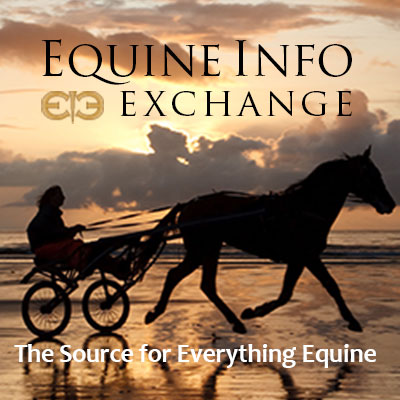
Help support healthy hooves with these insights.
Regular hoof care is of upmost importance to your horse’s well-being and performance, whether you’re an avid competitor or weekend trail blazer. For insights on hoof care and answers to some common questions, we visited with Valley Vet Supply Technical Service Veterinarian, Tony Hawkins, DVM.
For a healthy horse, hoof care is important. But, why?
“If their hooves are not well-maintained, horses can have significant stress on their ligaments, including the suspensory ligament, which can cause prominent lameness issues,” warns Dr. Hawkins. “Proper hoof care also helps address cushioning and proper biomechanics of the horse; anytime we throw that off, horses can be predisposed to conditions like navicular syndrome -- a degenerative condition of structures within the horse’s heel, often leading to chronic forelimb lameness.”
How often do horses need their hooves trimmed?
Horse hoof trimming needs will differ depending on the individual horse, and even the time of year. With this in mind, a good rule of thumb is to trim or shoe a horse every six to eight weeks. A University of Minnesota Extension report authored by Mary Boyce, DVM, states, “The horse’s hooves grow slower in the winter,” and during this time a trim or new set of shoes may only be needed every six to 12 weeks.
Do horses need to be shod?
Some horses need shoes on them. Horse owners will need to consider conditions both at home and when traveling, such as when standing on hard concrete and gravel, which can make horses more tender-footed.
Hoof boots are becoming all the more popular, with great designs like Easyboots for horses.
What is the common hoof ailment, thrush in horses, and how does one recognize it?
Dr. Hawkins says, “Thrush is a mixed bacterial, fungal infection of the horse’s frog (triangular in shape, extending mid-heel to toe). Thrush happens when horses’ hooves get wet and stay wet for extended periods. Their soft tissue of the hoof becomes weak and the bacteria, which is just naturally present in the environment, can invade that susceptible tissue, causing an infection further into the frog sulcus area. If we don't stay on top of it, thrush can become a huge problem before we really even realize there is one. If we have thrush issues, and wet conditions, we really need to focus on getting horses to a dry area. That's going to be a very important part of their therapy. You can put all of the products on it possibly that you want, but if we don't dry out that tissue, we may not see a successful treatment response.”
Thrush in horses’ hooves can cause them to be sore and tender-footed. If the horse isn’t treated, the condition can be drastic. The condition is especially prevalent during seasons with more rainfall. Shop thrush medication.
What causes hoof cracks in horses?
The culprit of hoof cracks in horses, according to the University of Minnesota Extension, includes dry or inconsistent weather and rainfall, extended trimming intervals and poor hoof health. Learn about the different kinds of hoof cracks and how to prevent them.
How can hoof supplements help?
A horse’s hoof health benefits from specific ingredients in hoof supplements, including Biotin, Iodine, Methionine and Zinc.
Dr. Hawkins says, “Hoof supplements help support the right level of vitamins (most importantly, Biotin), minerals and nutrition that support strong, healthy hoof growth. In return, that's going to help prevent issues, such as hoof cracks, and support strong laminar attachments to help horses avoid laminitis and founder issues.”
When should horse owners involve their veterinarian?
“Getting a veterinarian's input is valuable when it comes to challenges impacting the hoof,” Dr. Hawkins said. “Many hoof issues can preface systemic disease processes; getting a complete physical exam on the horse will help rule that out. For example, laminitis is considered a sign of Cushing's disease, also known as PPID (Pituitary Pars Intermedia Dysfunction), which is the most common hormonal disorder affecting horses and ponies. If it's severe enough, their veterinarian could recommend getting some radiographs of the leg and lower foot, which would be valuable information for their farrier to have and best correct the problem.”
Continue reading about horse hoof health in this Q&A with a longtime farrier. Shop hoof supplements available from veterinarian-founded ValleyVet.com.
This article originally appeared on Valley Vet and is published here with permission. Valley Vet Supply was founded in 1985 by veterinarians for people just like you - people who want the very best for their four-legged friends and livestock.
All photos courtesy of Valley Vet.
There are more informative articles in our section on Health & Education.
The EIE Amazon Store also offers great products for Hoof Care. Check it out!

































